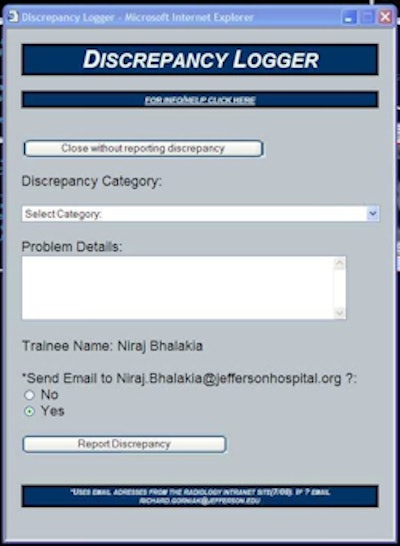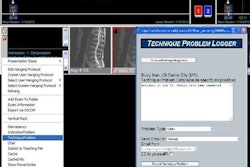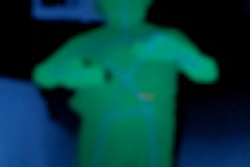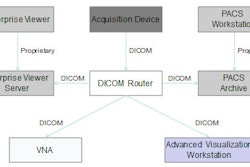
Attending radiologists occasionally disagree with preliminary reads by radiology residents, but managing these discrepancies can be an inefficient process. A new PACS add-on may help, according to research from Thomas Jefferson University (TJU).
A TJU team has developed Discrepancy Logger, a tool that allows attendings to email discrepancies to residents directly from PACS software. This information is also stored in an SQL database, enabling tracking of these results.
"Discrepancy Logger allows for remote teaching of residents and is quick and easy to use for attendings," said Dr. Richard Gorniak, who presented TJU's experience with Discrepancy Logger during a session at the American Roentgen Ray Society (ARRS) meeting in Chicago. He was the primary developer of Discrepancy Logger, with assistance from fellow neuroradiology attending Dr. Adam Flanders.
In many academic institutions, residents handle night call coverage and give preliminary reads on emergent studies. At TJU, the overnight studies are then distributed in the morning for final reading by subspecialty attendings in each section, Gorniak said.
Prior to development of Discrepancy Logger, residents -- who may not be present with the attendings during these final interpretations -- were supposed to go through the final reports of their studies to learn of their mistakes. Sometimes, an attending would also try to call the resident, he said.
"To me, it seemed that this system was little onerous on the residents, and they missed out on the one-on-one teaching from the attending," he said.
In addition, the previous method of documenting resident errors -- a paper logbook -- was slow and archaic, Gorniak said.
Enter Discrepancy Logger, a PACS add-on that takes advantage of the application programmer's interface (API) on the institution's iSite PACS software (Philips Healthcare). Discrepancy Logger places a button on cases in preliminary status, and attendings can then click on the button to launch a window for entering discrepancy data.
 Discrepancy Logger interface for attending radiologists. Image courtesy of Dr. Richard Gorniak.
Discrepancy Logger interface for attending radiologists. Image courtesy of Dr. Richard Gorniak.A pull-down menu allows for categorizing the discrepancy and includes a box for text entry. Once completed, residents automatically receive an email, which includes the case accession number, the discrepancy category, the text entered by the attending radiologist, and a link to a Web page that compares the anonymized resident's report with the attending radiologist's report.
The Discrepancy Logger mySQL database records information such as who used the tool and when, patient/study identifiers, study descriptors, discrepancy descriptions, and resident names.
Between April 31, 2008, and January 31, 2010, Discrepancy Logger was used to report 526 discrepancies on 13,921 overnight emergency department neuro CT and MRI cases. The 3.8% total discrepancy rate was similar to that found in previous studies, Gorniak said. All eight neuroradiology attendings used the system.
The implementation of Discrepancy Logger went pretty smoothly and it was well-received by both attendings and residents, Gorniak said. While some attendings use it more than others, residents in general seem to appreciate the teaching nature of the system.
"I did get feedback that some residents thought the system was 'too negative,' so I added a 'good job, nice pickup' option, allowing attendings to use the system to congratulate residents on particularly good calls," Gorniak told AuntMinnie.com.
Gorniak said he would be willing to share the tool with others.
"To get the full functionality, it would have to be on iSite," he said. "The iSite API is the key factor that allows for integration of home-grown or third-party tools into the PACS. I am not sure if other PACS have the same sort of API."



















